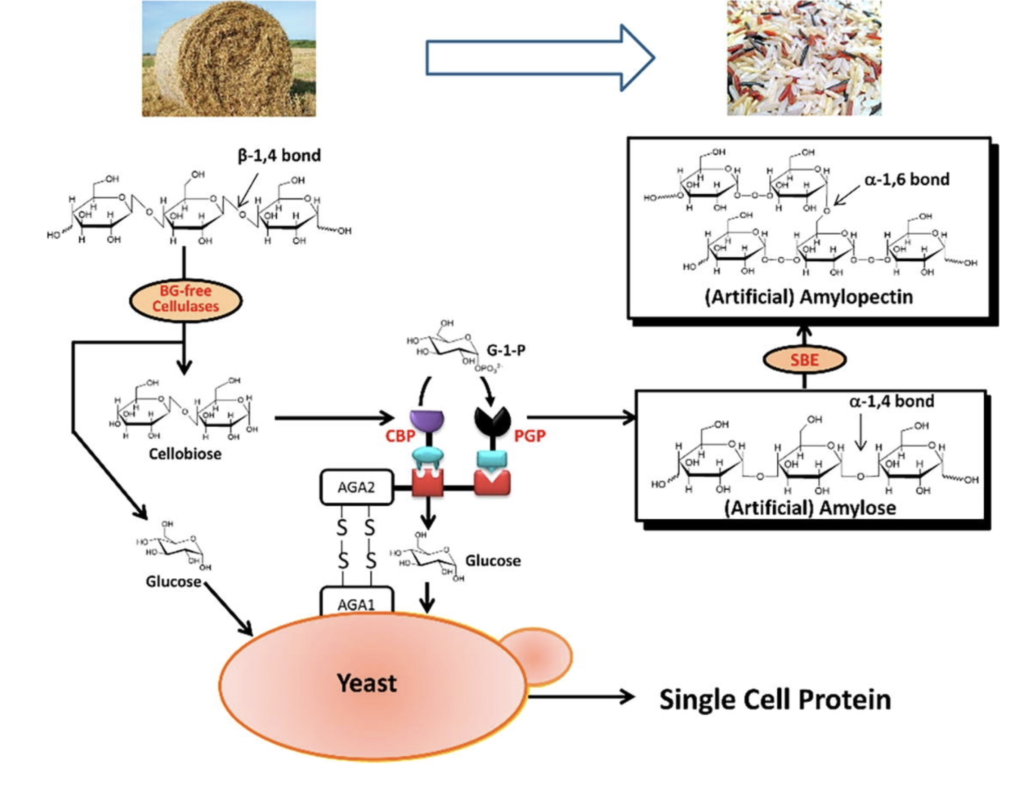https://www.sciencedirect.com/science/article/pii/S2095927323000221
Researchers at the CAS Institute of Industrial Biotechnology have developed a highly efficient biosynthesis of artificial starch and microbial proteins from available and abundant agricultural residues. A one-pot biotransformation using an in vitro coenzyme-free synthetic enzymatic pathway and baker’s yeast can simultaneously convert dilute sulfuric acid-pretreated corn stover to artificial starch and microbial protein under aerobic conditions. The β-glucosidase-free commercial cellulase mixture plus an ex vivo two-enzyme complex containing cellobiose phosphorylase and potato α-glucan phosphorylase displayed on the surface of Saccharomyces cerevisiae, showed better cellulose hydrolysis rates than a commercial β-glucosidase-rich cellulase mixture. This is because the channeling of the hydrolytic product from the solid cellulosic feedstock to the yeast mitigated the inhibition of the cellulase cocktail. Animal tests have shown that the digestion of artificial amylose results in slow and relatively small changes in blood sugar levels, suggesting that it could be a new health food component that prevents obesity and diabetes.


